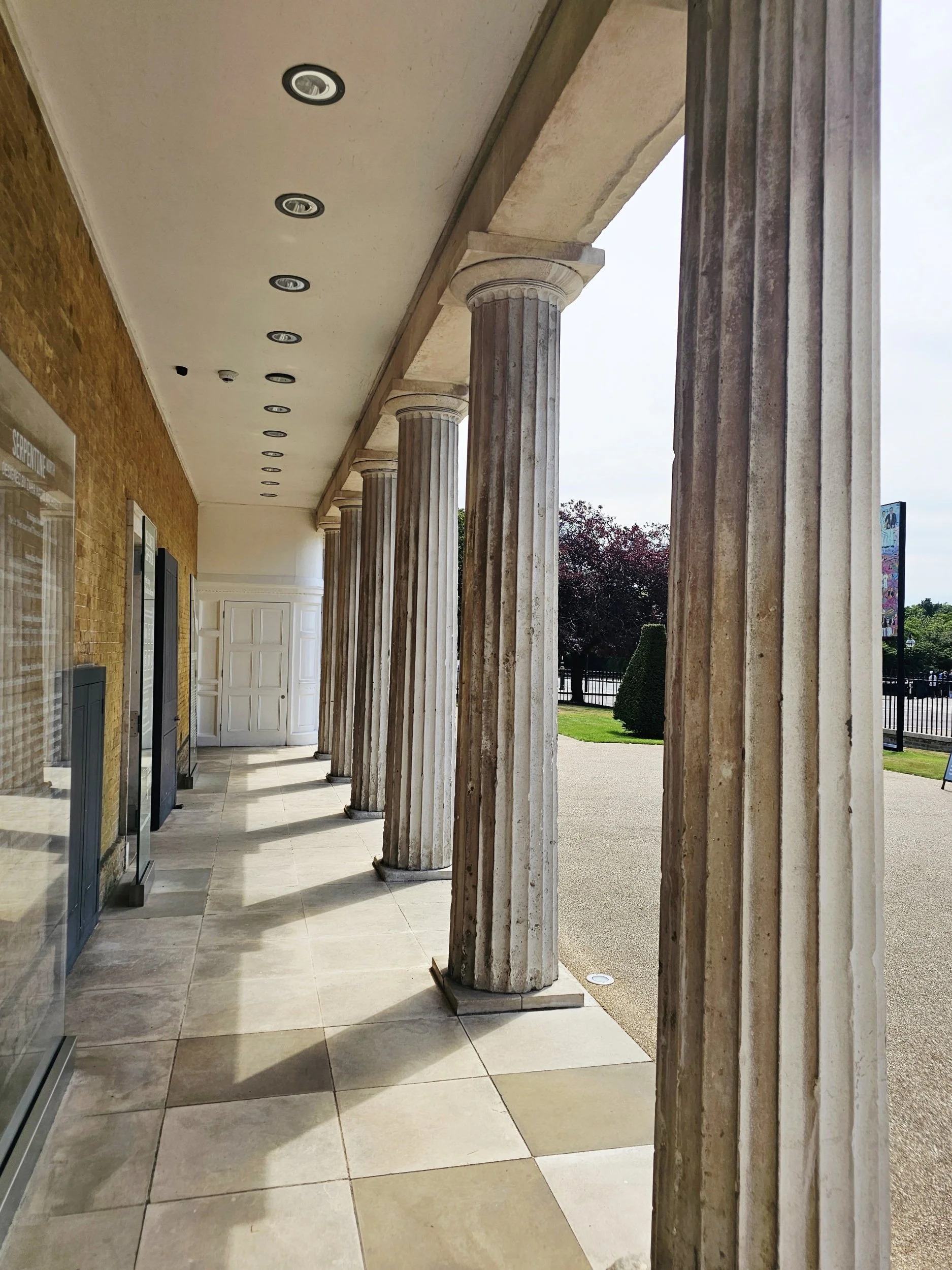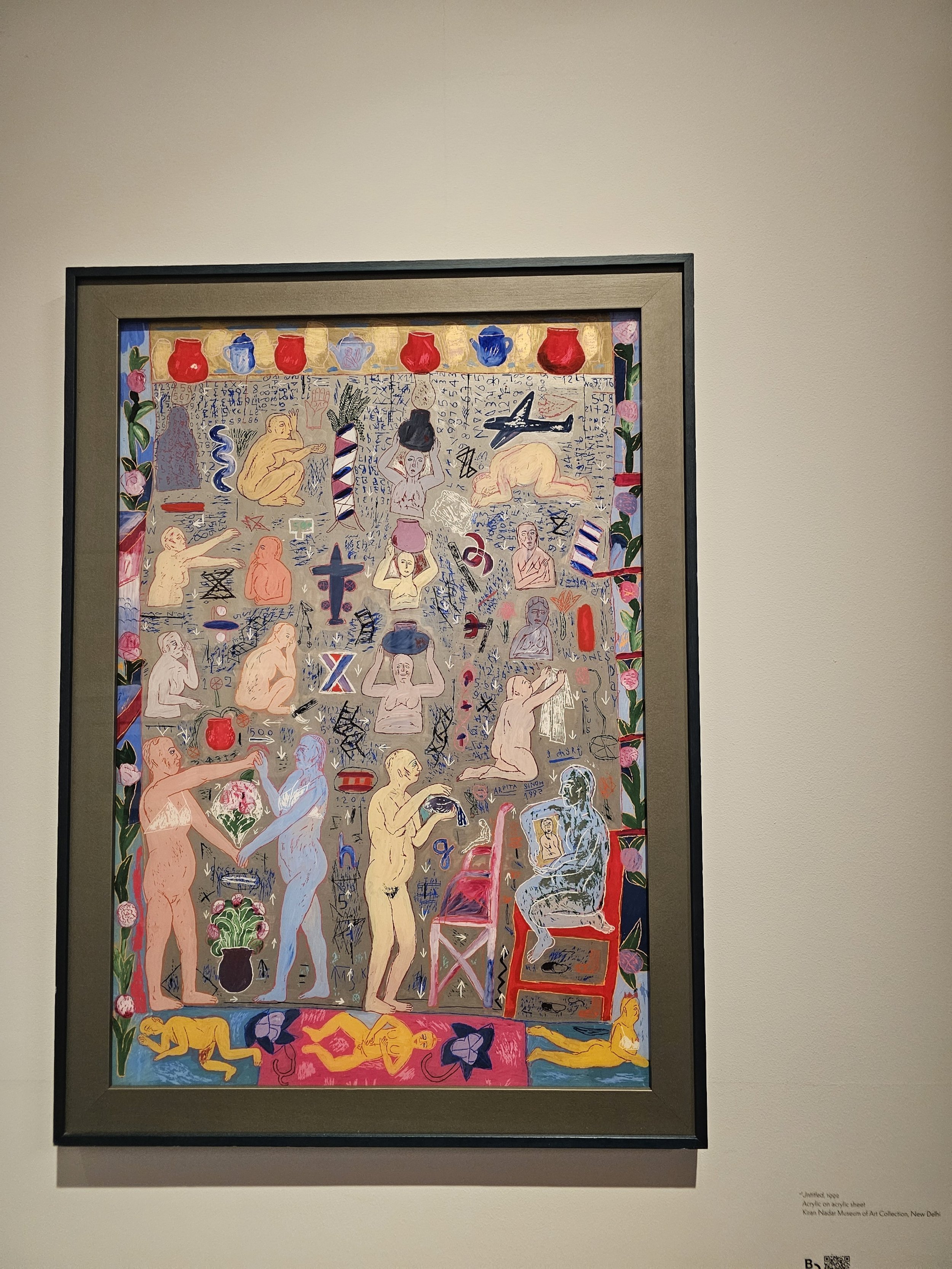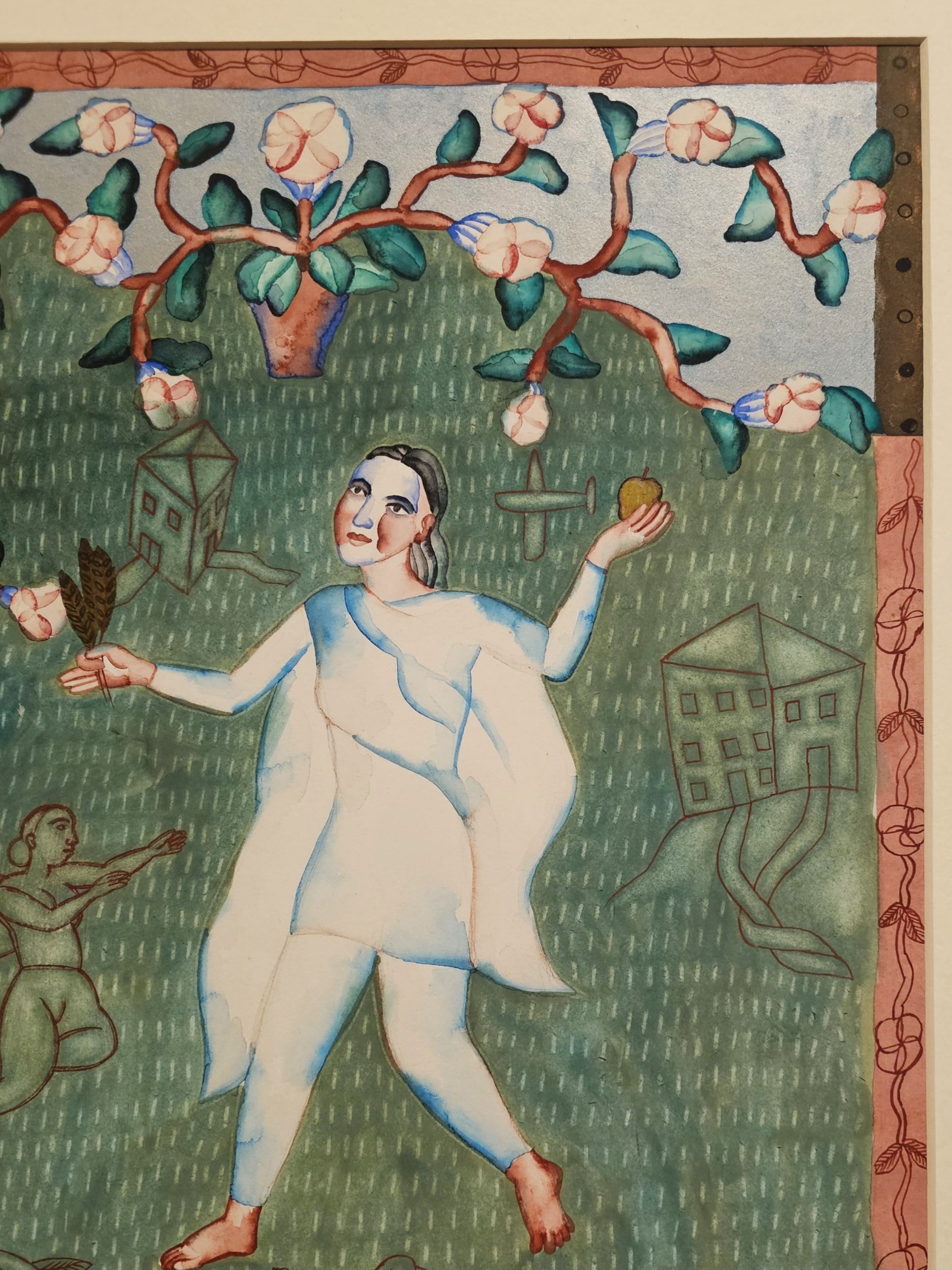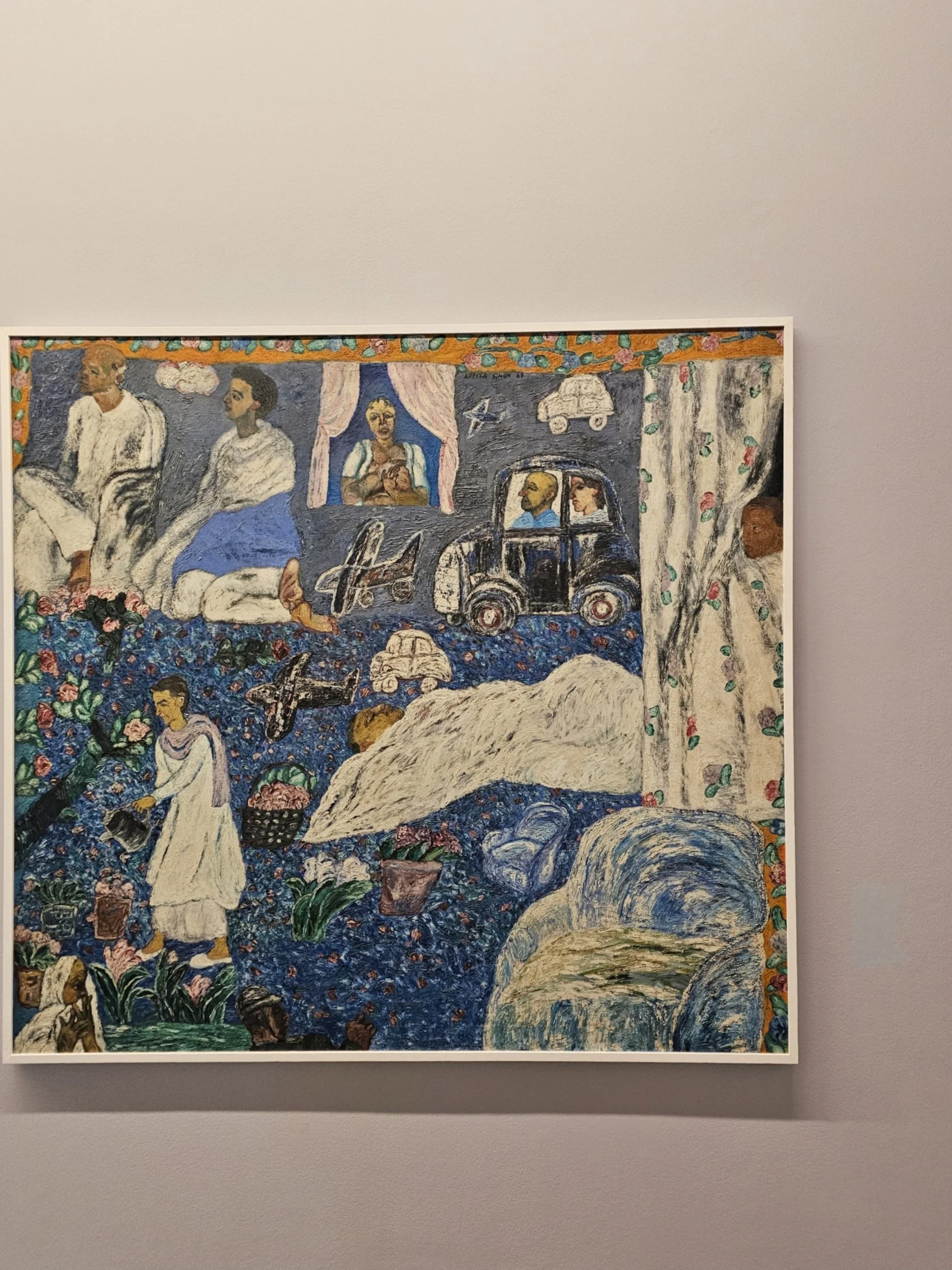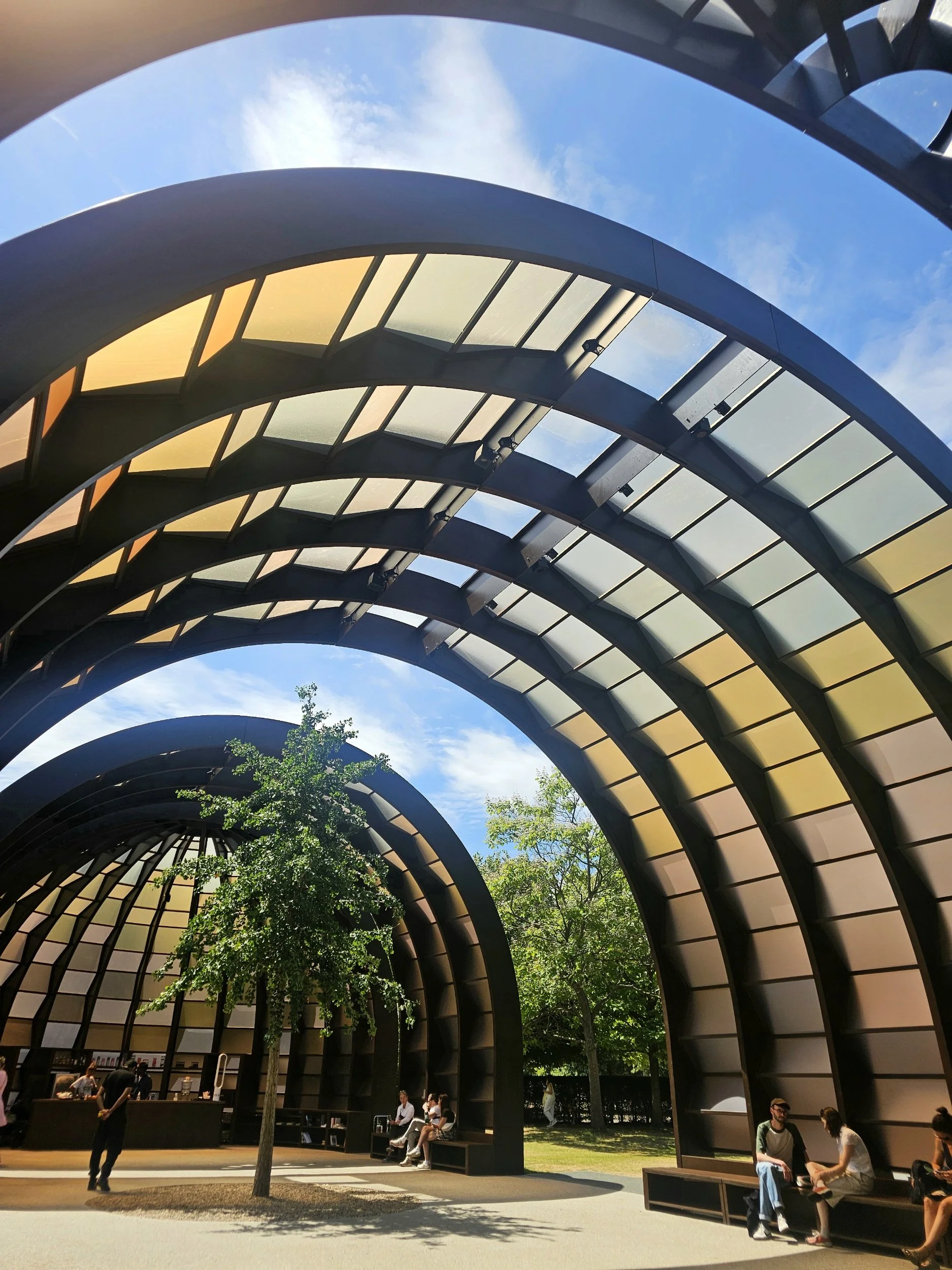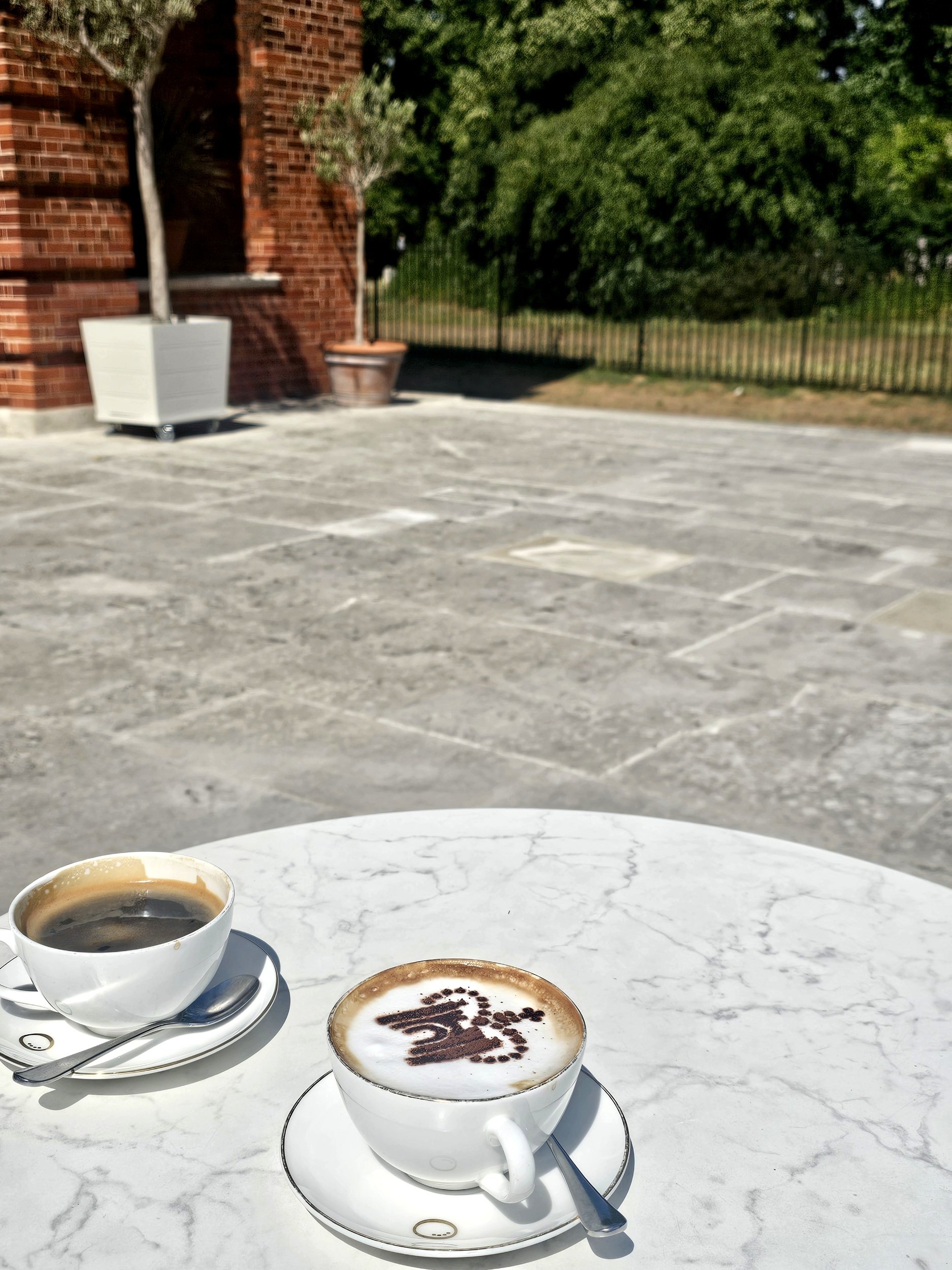Modern Indian Art meets London's Hyde Park: Arpita Singh at The Serpentine
I remember…quite a while ago before the advanced technology we have today, very much yearning to find and deep dive into the work of South Asian artists.
I've been a lover of London for pretty much my entire life, and have thoroughly basked in its cultural and Art scene through and through. However, as I aged, I found myself wanting to reconnect with my culture and advocate the kinds of ideals that South Asian culture isn't ordinarily known for, and in this case that was Art; wanting to find Pakistani, Indian, Bengali and Sri Lankan artists, wanting to indulge in, and celebrate their work. Pre-search Engines this was very difficult to do.
Which is why in recent years I have become pleasantly surprised how a city like London, though always having been a melting pot, only recently started to showcase a real diversity of artists on grand platforms via the well-known gallery exhibitions and experiential events.
The Serpentine Gallery has got to be one of the absolute must visit art spaces in London. Situated in Hyde Park, every summer they create what's known as a Pavilion which sits adjacent to The Gallery itself and is known to be an experiential space which you can walk through and enjoy.
This summer the gallery was hosting Indian artist Arpita Singh, and it perhaps is no coincidence that in parallel the pavilion structure was built by Bengali architect, Marina Tabassum of Marina Tabassum Architects (MTA).
The idea of an Art gallery in the middle of a beautiful grand park sounds pretty idyllic to me. However, one of the spaces biggest assets is also one of its challenges because by being situated in an open space, it can often be overseen and difficult, requiring you to go out of your way to get from one place to the other. In the way I love gallery hopping as I've shared before, you can't really do that here because it'll take you a while to get out of Hyde Park in the first place, before you can then venture off to your next Art destination. For this reason (and more) it's really about crafting some time to truly enjoy everything that this pocket of London has to offer.
If you're looking to spend a culturally rich, half day in London and experience something a little bit special, I would definitely recommend wrapping up The Serpentine Gallery with a trip to Kensington Palace, followed by lunch (or tea) at The Orangery at Kensington Gardens, punctuated with slow strolls across Hyde Park.
The Serpentine Gallery: A contemporary Art landmark in London
As with the Islington gallery Victoria Miro, where I fell so in love with the Art space itself, The Serpentine is also one such a space truly unique in terms of exhibiting and channeling Art given nestled in a park.
Originally having opened in 1970, it occupies a former 1930s tea pavilion and has since expanded into two spaces: The Serpentine South Gallery and The Serpentine North Gallery, connected by a short bridge over The Serpentine lake (which is just the most beautiful, two minute walk). The North Gallery (formerly The Magazine) was redesigned by the late architect Zaha Hadid and often houses creative installations and exhibitions. There has to be another post coming on about the formidable Zaha Hadid and my obsession with her. That's pending.
Modern Indian Art in the heart of Hyde Park
The Serpentine’s 2025 summer exhibition features legendary Indian artist Arpita Singh, in a major UK solo show titled “Remembering.”
One of the things that completely floored me about her show, was the quantity of work she has produced and the range of artistry and skill she has. Though there's a definitive theme through and through, there are different styles of work which were created at different points in her life. True to the concept of her own exhibition around memory and time, you can see her life's work and how it has evolved over her six decade career.
Arpita is celebrated for her vivid, dreamlike compositions that weave together myth, memory, feminism, and political tension. Walking through the exhibition felt like stepping into a painted diary, one that documents collective grief, inner conflict, and a deeply personal yet universal womanhood. Her canvases are rich in symbolism, text, and layered storytelling, drawing on miniature painting traditions, pop art, and folk forms. Her work is known for its portrayal of female bodies, often distorted or defiant, reflecting both intimacy and resistance.
I fell so in love with her style, her small artistry details and use of colour.
She blends acrylic, watercolour, and ink, creating multi-figure scenes where the domestic, the political, and the mythological coexist. Some paintings reference warplanes and weapons, others show women entangled with symbols of domestic life, teapots, beds, letters, all rendered in a vibrant, whimsical palette that belies their emotional depth.
The Pavilion at The Serpentine
Each summer, The Serpentine also commissions a world-renowned Serpentine Pavilion, a temporary architectural structure created by a leading international architect. This year’s pavilion is designed by award-winning Bengali architect Marina Tabassum, known for her work integrating climate-responsive design and cultural memory — a fitting reflection of the cultural themes explored inside the gallery itself.
This was truly beautifully put together, and seemed very different from the kind of design you would ordinarily find in London; the intentional combination of nature with unique, Urban architecture (not high and shiny like skyscrapers, but wide and matt) made for a truly calm and peaceful place. I was initially disappointed that there wasn't much to do, other than buy a coffee, but I very quickly found myself sitting down and feeling time just flying by in…rest.
The Orangery at Kensington Gardens
Quite literally a stone throw away from Kensington Palace (which you can pop in and visit) is the infamous The Orangery; a bright, neoclassical pavilion originally built in 1704 for Queen Anne. With soaring ceilings, floor-to-ceiling windows, and a view of manicured lawns and rose gardens, it offers a serene and refined escape from the city's bustle.
I was completely enamoured by the red brick; and this is something I so love about London town. It's the historical architecture made of that beautiful yellow, red and white stone work, and then often contrasted against modern buildings made of contemporary materials and glass. Traditional brickwork is a dying art in cosmopolitan areas, given the cost, effort and land needed.
It can be a little underwhelming when you enter, if I'm being honest, but still absolutely worth stopping by, especially if you get a seat outside where you can have a coffee, enjoy the site and watch people passing.
Especially in summer, it’s the perfect stopover in Hyde Park wander, a place to slow down, people-watch, and soak in the beauty of Historic West London.
There was something so utterly perfect about this day. It was planned only to the extent that we knew we wanted to go to the gallery and stop over at The Orangery, but then everything else in between from the strolls, to the lunch, to The Pavilion, to the exhibition being phenomenal (and not an anti-climax) was all unexpected. It was one of those days where the stars aligned and we were able to truly rest in the moment, and just enjoy being there.
Another such a day I recall was my stay at the Shangri-La Hotel at The Shard. Such a night with London's skyline was combined with a stroll around London Bridge, walking through Borough Market to grab some tasty treats and a deliciously brewed fresh coffee… all whilst under London's sun.
Super simple serendipity.


